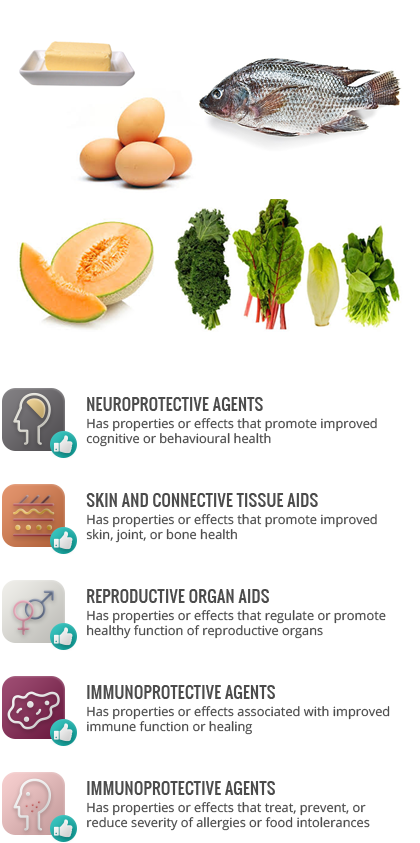Vitamin A
Definition
Vitamin A, in its many forms, is vital compound for the maintenance of vision, epithelial tissue, reproduction, growth, immune function, and it also works as an antioxidant. Each of Vitamin A’s forms plays a different role in the body, though some forms are able to be converted interchangeably between each other to complete these roles as needed.
Health considerations
This vitamin has two major subclasses, one being retinoids, the other being carotenoids. Retinoids are only found in animal products and are the active form of vitamin A, whereas carotenoids are only found in plant-based foods and are the precursor to vitamin A. Since carotenoids are not the active form of vitamin A, more carotenoids must be consumed to make up for absorption insufficiencies if one is not consuming animal-based products. Though, because retinoids are more easily absorbed and used in the body it is easier to ingest a toxic amount of this vitamin by eating mainly retinoids. Vitamin A toxicity symptoms include headaches, vomiting, hair loss, liver damage, skin changes, bone pain, muscle pain, fractures, and birth defects, while deficiency symptoms include night blindness, inability to produce tears, poor growth, dry skin and impaired immunity. People at risk of vitamin A deficiency are those with a restricted diet such as children and pregnant women, as well as those on low-fat and low-protein diets.
May be found in
Retinoids: liver, fish, fortified milk, fortified margerine, fortified butter, eggs. Carotenoids: carrots, dark leafy greens, sweet potatoes, broccoli, apricots, cantaloupe
References
Nutrition: Science and Applications
Alternative Spellings and Names
Vitamin A palmitate, Retinyl palmitate, Retinyl acetate, Retinol acetate, Vitamin A acetate, Retinol, Retinal, Retinoic acid, α-carotene, β-carotene, γ-carotene, β-cryptoxanthin, alpha-carotene, beta-carotene, gamma-carotene, beta-crytoxanthin, Cryptoxanthin


